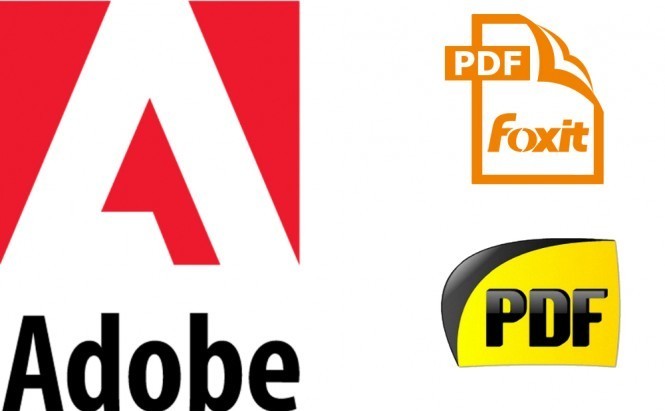Christmas has come and gone, and we're still using Adobe Reader for opening the now ubiquitous PDF files. I guess it makes sense, given that the PDF format itself was developed by Adobe: the company keeps adding new features to the format, like password encryption and 3D artwork, without bothering to update the publicly available PDF format specifications - which means that third-party PDF readers are usually left one or two features behind and may be incompatible with those shiny new IRS forms you've downloaded. Is it really the case, though?
Adobe Reader
It's safe to say that you can't go wrong with Adobe Reader. It will open whichever PDF you throw at it, without a hitch or even a hint of broken formatting. It can convert your PDF files into MS Word and Excel ones (and back). It can save your filled in PDF forms as separate files. It has dozens of tools for annotating, highlighting, commenting, and collaborating on PDF documents. You'd normally need two or three different applications to do all that - so what's the problem?
The problem is that you don't need all this stuff, but Acrobat Reader will continue growing features with every new version. Sending files via SendNow, uploading files to Acrobat.com, spellchecking, digital signatures, distance measurement, accounts with restricted access to specific documents - chances are, even if you're using some of these features, you're not using some other ones. But Adobe Reader still has them, and it bogs down your system, taking away the resources that could be used for better 3D graphics processing, or to render a video in the background whilst you're working on your document. I don't know about you, but I want a PDF reader just to read PDF documents, and nothing more. Without the spectacle creep.
Foxit Reader
Foxit Reader seems to be the go-to PDF viewer for those jumping the Adobe ship looking for something less bloated. It's a good start, and some of the hefty components - like the spellchecker, PDF converter, shell add-ons, and browser add-ons - can be switched off during installation, which indeed makes Foxit Reader somewhat lighter than Adobe Reader. The problem is, 'lighter' is still not quite enough.
Don't get me wrong, it's still leaps and bounds better than Adobe Reader: it loads faster, it's got half the footprint, it retains all the important features like annotations, digital signatures, document protection, and so on. But somehow Foxit Reader manages to look even more cluttered than Adobe's creation. Its interface utilises the ribbon style introduced by the later versions of Microsoft Office, with tabbed toolbars instead of drop-down menus, and visual grouping of similar tools instead of a centralised toolbar with your own selection of frequently used ones. This means that you'll have to spend a good chunk of your time closing and reopening the ribbon-style menu because it eats up a big portion of the screen estate, and there's no other way to switch between different tools.
But even if you don't need to switch anything, it still somehow manages to look cluttered: there are additional toolbars on your left (who would need instant access to layer management and security settings - instead of, say, selection tools and zooming - is beyond me) and at the bottom; there are also tabs for each open PDF document, and adverts - yes, ad banners - above your document. If you can live with all that - Foxit Reader is really a treat, and you can't go wrong with it either: it's compatibility with newer PDF documents is stellar, it can save filled in PDF forms, it does practically everything Adobe Reader does. It's just that it could be so much better without all that.
SumatraPDF
I've come to respect this little open-source gem since I started noticing paid PDF readers obviously based on its source code. What can I say, it's neat and very efficient, so I can't fault them for that. SumatraPDF is a PDF reader that knows what it is: it doesn't have any conversion tools (although you can export the text as a TXT file), or any collaboration tools, doesn't support highlighting, annotations - it just reads PDF files. And also EPUB files, DJVU files, and a plethora of others. Its footprint is almost nonexistent, and its interface doesn't get in the way of reading your documents; it's a real joy to use.
We've got a winner, surely? Well, not exactly, I'm afraid. Among the things that SumatraPDF doesn't do there's a clear letdown: it doesn't allow you to work with PDF forms at all. I mean, it's not that you can't save your filled in tax return form in PDF, you can't fill it in full stop - SumatraPDF treats them as images and the best you can do is print them out and fill them in by hand. This may not bother you at first, but if you're going to use SumatraPDF for everything PDF-related, you'll notice it sooner or later - and you'll have to install another PDF reader, which kind of defeats the purpose of picking an alternative one in general. But then again, everything in Adobe Reader started off as an extra feature, too.





 I was looking for alternatives anyway. Thanks guys
I was looking for alternatives anyway. Thanks guys 



